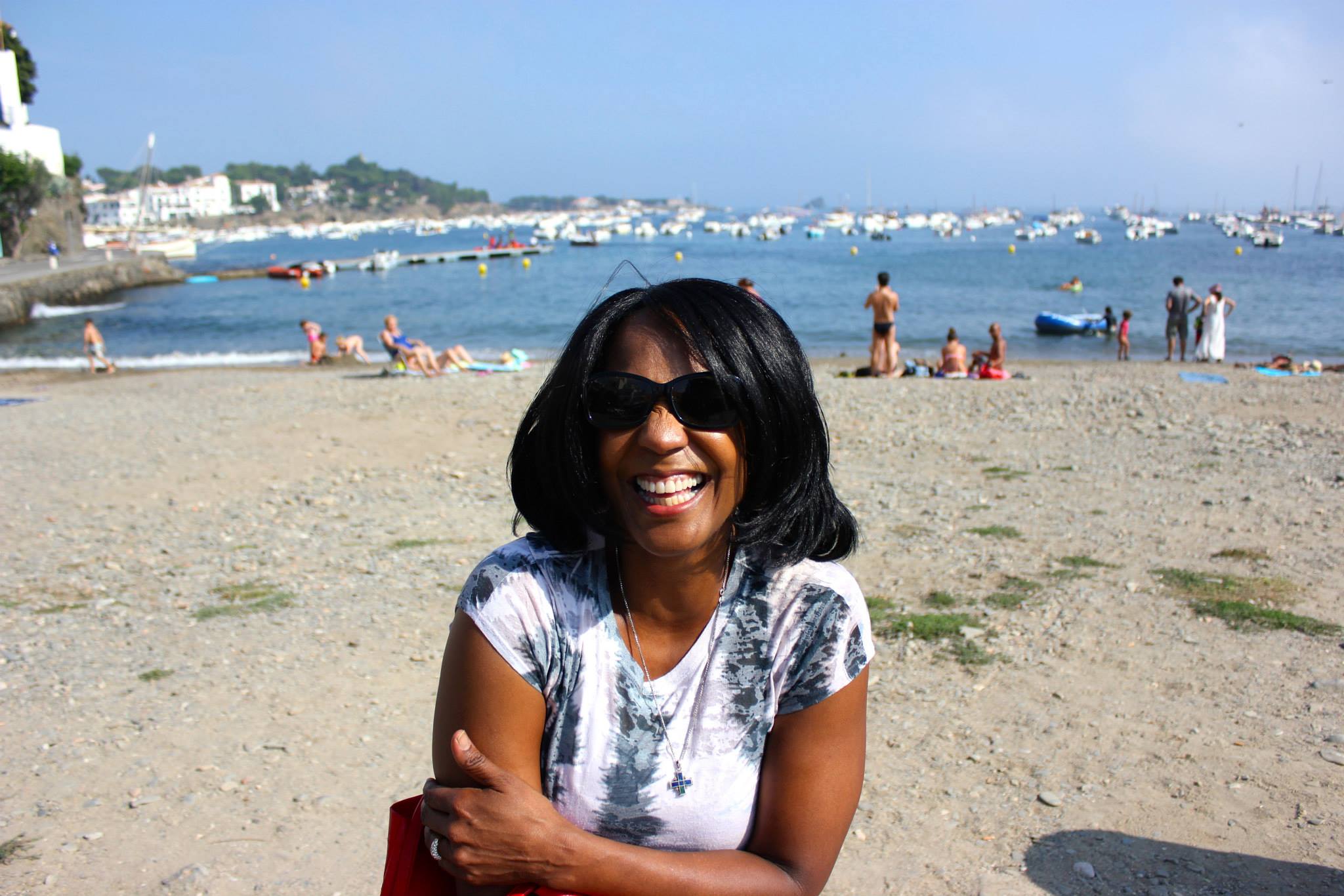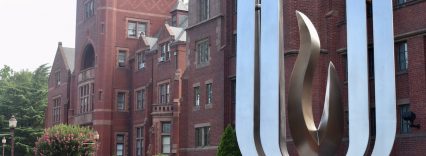Returning to a place I never knew: Spain and my family connection

By Rev. Dr. Angela S. Duncan (Union-PSCE ’03)
First, let me say that I love Spain. This is my second visit and I will most likely visit on a yearly basis since I have family living there. I love siestas and the pace of life where families take off work in the middle of the day to go home and have lunch with one another. At lunchtime, somewhere around 1 p.m. or 2 p.m., the businesses close and don’t open again until around 4 p.m. or 5 p. m. Lunch is the biggest meal and dinner, a much lighter meal, is eaten around 8 p.m. or 9 p.m. Culturally, the family unit is encouraged and family is extended to close friends.
There are so many places and regions to visit in Spain with its diverse geography and culture, art, museums, monuments, beaches, cities, and cuisine. Many people speak more than one language and travel to other countries is expected and is the norm. For example, Spanish, Catalan, and English are spoken where my daughter lives in Santa Maria de Palautodera (Palau). A train or plane ride to another country may be as low as $30 Euros.
My eldest daughter, Erica, lives in Palau with her husband Carlos, and their new baby girl, Kora. Palau is located in the Montseny mountains, 57 kilometers (53 minutes) from Barcelona and less than two hours from the French border. She has lived in Spain for five years but recently moved to Palau. I am enjoying my new granddaughter, Kora Fernandez-Duncan. Kora is named after a Mandinkan West African Harp, which is a 21 stringed instrument, traditionally played by West African historians or Jalis. Jalis are genealogists and storytellers (similar to the Griots in other parts of West Africa). The Jalis pass on to future generations the skill of playing the Kora and also the stories of their families and communities.
I also have a special interest in Spain because one of my maternal ancestors, Cato Marion, was born in 1773, in Zaragoza approximately three hours from Barcelona. I can now add him to my family genogram, thanks to Dr. Carol Schweitzer who in 2002 taught me how to create a genogram in her Pastoral Care with Families course. The genogram documents genealogy, family patterns, and generational blessings and curses. My daughter, Erica, didn’t realize she was moving closer to the birthplace of one of her own ancestors. We now know that Cato was a navigator on a ship but we are still trying to discover who his parents were. Were they African slaves? Was he a descendant of an interracial relationship? Was he a Spaniard with European ancestry who married a Black woman in America? We only know that he ended up in the United States and married Mariah, (my great, great, great, great grandmother) who was born in 1799 in the state of Virginia.
It’s impossible for me to travel and not want to understand the history of the places that I visit. Thanks to my parents, who encouraged travel and learning the history of the places I visit as well as professors like Dr. Katie G. Cannon who asked me the hard questions about the ethical practices of those very same places Spain and Religion
I am exploring Spain’s influence on the New World, in particular, its relationship with other religions and cultures, slavery, the slave trade, caste systems, and treatment of women. The Spanish Inquisition’s purpose in Spain was to purge other religions and customs that did not align with the Spanish government. Spain colonized the countries it took control of and practiced a caste system that used race, ethnicity, and religion as a way to control the original inhabitants of the land. Some places in the United States and the Caribbean are beginning to reject Christopher Columbus as the founder of the Americas. These places now celebrate the indigenous people who were the original inhabitants. I will briefly limit this article to religion as it applies to culture, slavery, race, and ethnicity.
I’m always amazed at the amount of statues, cathedrals, and basilicas that cover the European landscape. The religious markers fascinate me and I am immediately drawn to the religious and the spiritual. My family will tell you that I sat through three masses spoken in French at the Le Sacre Coeur outside of Paris because it is a place for pilgrimage for Christians all around the world. I’ve also climbed the towers in Notre Dame in France and La Sagrada Familia in Spain, and so many other places too numerous to name here, wanting to connect with and trying to understand Europe’s influence on Christianity and its influence on American culture. Roman Catholicism is the largest religion in Spain but practical secularization is very strong and growing as it is in America. Catholicism as the state religion was only abolished in 1978 but continues to influence current Spanish society.
I am here visiting during the La Semana Santa also known as Easter week or Passion week. Elaborate art is created with palms and sold everywhere. The bells of the churches are ringing constantly announcing the call to mass and the celebration of the life, death, and resurrection of Jesus. I’m a Baptist minister but I have lit more candles this week and prayed so many times at the various altars and have felt very connected to my Creator and my purpose. And while I am celebrating and practicing my faith, I am not blind to the fact that religion has been misused, misguided, and errant in its teaching to select groups of individuals. The history of inquisitions, using the name of Christ but subtly displaying nativism and nationalism, is similar to what African Americans experienced during slavery, Jim Crow and now the Trump era.
Religion is sometimes used to divide and separate those whose political or social views are not the same. I continue to understand how my African American ancestors were able to embrace a religion not their own, make it their own, and also recognize the oppressor’s misguided religious justification for mistreatment and abuse against them. Spain and its national religion, Roman Catholicism, was the standard and therefore Spain attempted to purge all other religions, which also meant nationalities and ethnicities.
On this visit, I visited Zaragoza, the birthplace of Cato. I could feel his presence, just as I could feel the presence of my African ancestors while standing in the slave castles on the western coast of Africa. I recently saw a tee-shirt that said, “I am my ancestor’s wildest dreams.” I’m wondering what my ancestors are thinking and saying as they see me traveling to the very places that they inhabited but free enough to walk around and explore in ways that they might not have been able. What would they think about my Spanish son-in-law and his parents? Did the spirit of Cato Marion guide my daughter to Spain and if he did for what purpose? As I lit the candles and said prayers during this holy week I prayed for God to continue to guide and protect my family and me. I am truly thankful during this holy season and grateful for the opportunity to visit my family – old and new.








